A Comparison Study on the Strengthening and Toughening Mechanism between Cu-Bearing Age-Hardening Steel and NiCrMoV Steel
Abstract
:1. Introduction
2. Materials and Methods
3. Results and Discussion
3.1. Mechanical Properties and Microstructure Observations
3.2. Precipitates Observation and Analysis
3.3. Comparison of the Mechanism of Strengthening and Toughness
4. Conclusions
- As compared to conventional NiCrMoV steel, the Cu-bearing age-hardening steel exhibits a relatively poor hardenability. After quenching and subsequent tempering, the microstructure of Cu-bearing age-hardening steel consists largely of bainite.
- Cr carbides have been found in both tested steels, with particle sizes of about 120–150 nm. However, some finer Cu-rich phase particles of about 20–40 nm in size can also been found in the Cu-bearing age-hardening steel.
- Cu plays a leading role in precipitation hardening, making up for the strength loss in Cu-bearing age-hardening steel due to the content reduction of carbon and other alloying elements. The interactions between Cu particles and dislocations result in dislocation multiplication, which contributes to the better plasticity of Cu-bearing age-hardening steel.
Author Contributions
Funding
Institutional Review Board Statement
Informed Consent Statement
Data Availability Statement
Conflicts of Interest
References
- Sekban, D.M.; Akterer, S.M.; Saray, O.; Ma, Z.Y.; Purcek, G. Formability of friction stir processed low carbon steels used in shipbuilding. J. Mater. Sci. Technol. 2018, 34, 237–244. [Google Scholar] [CrossRef]
- Bejinariu, C.; Burduhos-Nergis, D.-P.; Cimpoesu, N. Immersion behavior of carbon steel, phosphate carbon steel and phosphate and painted carbon steel in saltwater. Materials 2021, 14, 188. [Google Scholar] [CrossRef] [PubMed]
- Sekban, D.M.; Aktarer, S.M.; Xue, P.; Ma, Z.Y.; Purcek, G. Impact toughness of friction stir processed low carbon steel used in shipbuilding. Mater. Sci. Eng. A. 2016, 672, 40–48. [Google Scholar] [CrossRef]
- Dilip, J.J.S.; Janaki Ram, G.D.; Starr Thomas, L.; Stucker, B. Selective laser melting of HY100 steel: Process parameters, microstructure and mechanical properties. Addit. Manuf. 2017, 13, 49–60. [Google Scholar] [CrossRef]
- Kim, B.C.; Lee, S.; Lee, D.Y.; Kim, N. Tempered martensite embrittlement in an AISI 4340 steel. Metall. Trans. A. 1991, 22, 1889–1892. [Google Scholar] [CrossRef]
- Lee, W.S.; Su, T.T. Mechanical properties and microstructure features of AISI 4340 high-strength alloy steel under quenched and tempered conditions. J. Mater. Proc. Technol. 1999, 87, 198–206. [Google Scholar] [CrossRef]
- Salemi, A.; Abdollah-Zadeh, A. The effect of tempering temperature on the mechanical properties and fracture morphology of a NiCrMoV steel. Mater. Charact. 2008, 59, 484–487. [Google Scholar] [CrossRef]
- Abdollah-Zadeh, A.; Belbasy, M. Effects of Mn and Cu on the mechanical properties of a high strength low alloy NiCrMoV steel. J. Mater. Sci. Technol. 2005, 21, 470–474. [Google Scholar]
- Zheng, Y.X.; Wang, F.M.; Li, C.R.; Li, Y.J.; Cheng, J.; Cao, R.F. Effect of microstructure and precipitates on mechanical properties of Cr-Mo-V alloy steel with different austenitizing temperatures. ISIJ Int. 2018, 58, 1126–1135. [Google Scholar] [CrossRef] [Green Version]
- Das, S.K.; Sivaprasad, S.; Das, S.; Chatterjee, S.; Tarafder, S. The effect of variation of microstructure on fracture mechanics parameters of HSLA-100 steel. Mater. Sci. Eng. A. 2006, 431, 68–79. [Google Scholar] [CrossRef]
- Yang, T. Study on Microstructure and Properties of a Cu age-HARDENING High Strength Heavy Hull Steel Plate. Master’s Thesis, Central Iron & Steel Research Institute, Beijing, China, 2017. [Google Scholar]
- Han, G.; Xie, Z.J.; Xiong, L.; Shang, C.J.; Misra, R.D.K. Evolution of nano-size precipitation and mechanical properties in a high strength-ductility low alloy steel through intercritical treatment. Mater. Sci. Eng. A. 2017, 705, 89–97. [Google Scholar] [CrossRef]
- Wang, Q.; Chai, I.F.; Cai, J.; Pan, T.; Su, H. Kinetic model of ε-Cu particle dissolution in welding-induced HAZ of Copper-containing steel. J. Iron Steel Res. Int. 2008, 15, 66–69. [Google Scholar] [CrossRef]
- Kan, L.Y.; Ye, Q.B.; Wang, Q.H.; Tian, Y.; Wang, Z.D.; Wang, Y.M.; Hu, J. Refinement of Cu-M2C precipitates and improvement of strength and toughness by Ti microalloying in a Cu-bearing steel. Mater. Sci. Eng. A. 2021, 802, 140678. [Google Scholar] [CrossRef]
- Hou, W.; Liu, Q.D.; Gu, J.F. Improved impact toughness by multi-step heat treatment in a 1400 MPa low carbon precipitation-strengthened steel. Mater. Sci. Eng. A. 2020, 797, 140077. [Google Scholar] [CrossRef]
- Xu, S.S.; Zhao, Y.; Chen, D.; Sun, L.W.; Chen, L.; Tong, X.; Liu, C.T.; Zhang, Z.W. Nanoscale precipitation and its influence on strengthening mechanisms in an ultra-high strength low-carbon steel. Int. J. Plast. 2019, 113, 99–110. [Google Scholar] [CrossRef]
- Gao, X.Y.; Wang, H.Y.; Ma, C.N.; Lv, M.; Sha, G.; Li, Y.M.; Ren, H.P. Micromechanism involved in ultrafine grained ferrite/martensite dual phase steels strengthened by nanoscale Cu-rich precipitates. Mater. Sci. Eng. A. 2021, 819, 141522. [Google Scholar] [CrossRef]
- Sun, M.; Zhang, W.; Liu, Z.; Wang, G. Direct observations on the crystal structure evolution of nano Cu-precipitates in an extremely low carbon steel. Mater. Lett. 2017, 187, 49–52. [Google Scholar] [CrossRef]
- Sun, S.; Xue, Z.; An, L.; Chen, X.; Liu, Y. A Novel Design to Enhance the Mechanical Properties in Cu-Bearing Antibacterial Stainless Steel. Materials 2020, 13, 403. [Google Scholar] [CrossRef] [PubMed] [Green Version]
- Guo, H.; Cheng, J.; Yang, S.; He, X. Influence of combined Cu and Nb addition on the quenched microstructure and precipitation during tempering in ultra-low carbon steels. J. Alloys Compd. 2013, 577, S619–S625. [Google Scholar] [CrossRef]
- New Class of Steel: Targeted Mixed Microconstituence Structure in Nanosteel AHSS. Available online: https://nanosteelco.com/?/products/sheet-steel/new-class-of-steel/ (accessed on 18 October 2018).
- NanoSteel Delivers Advanced Automotive Steel to General Motors. Available online: https://www.businesswire.com/news/home/20160421005452/en/ (accessed on 28 July 2021).
- Ding, H.L.; Zhu, G.H.; Xiang, C.C.; Pei, F.J.; Chen, J.; Wang, Y.Q.; Chen, Q.W. Excellent combination of plasticity and ultra-high strength in a low-alloy automotive steel treated by conventional continuous annealing. Mater. Sci. Eng. A. 2020, 791, 139694. [Google Scholar] [CrossRef]
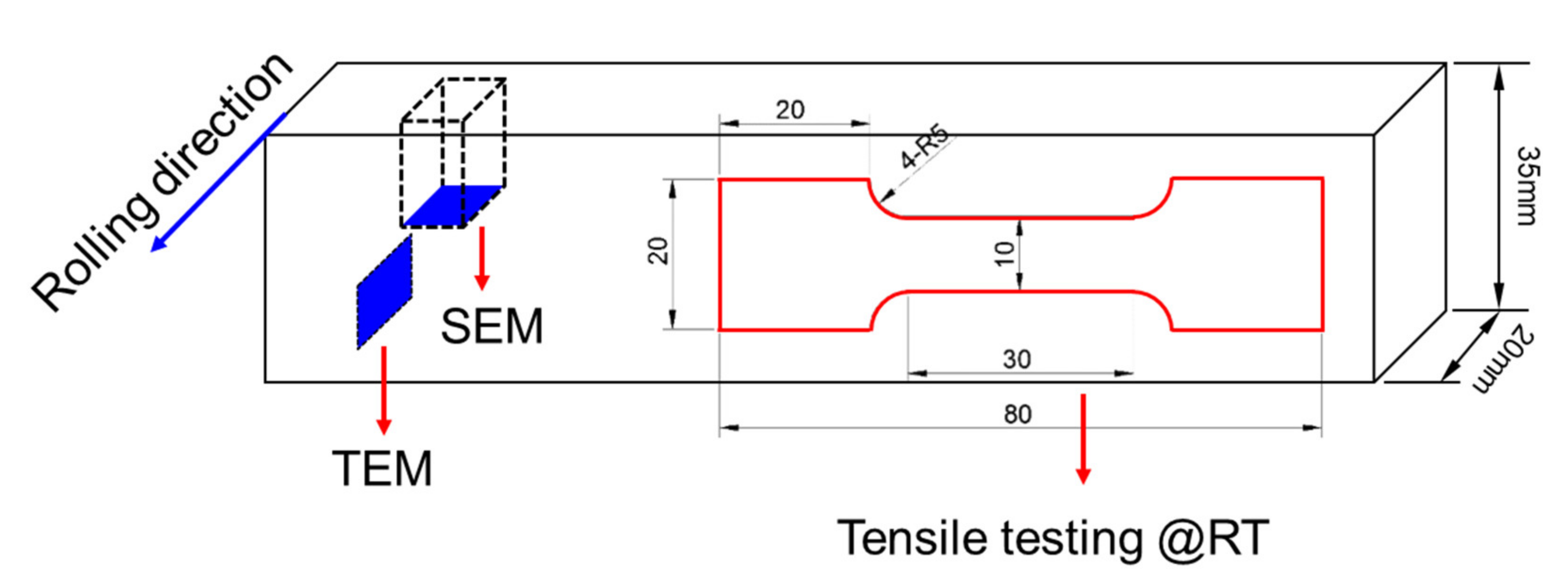
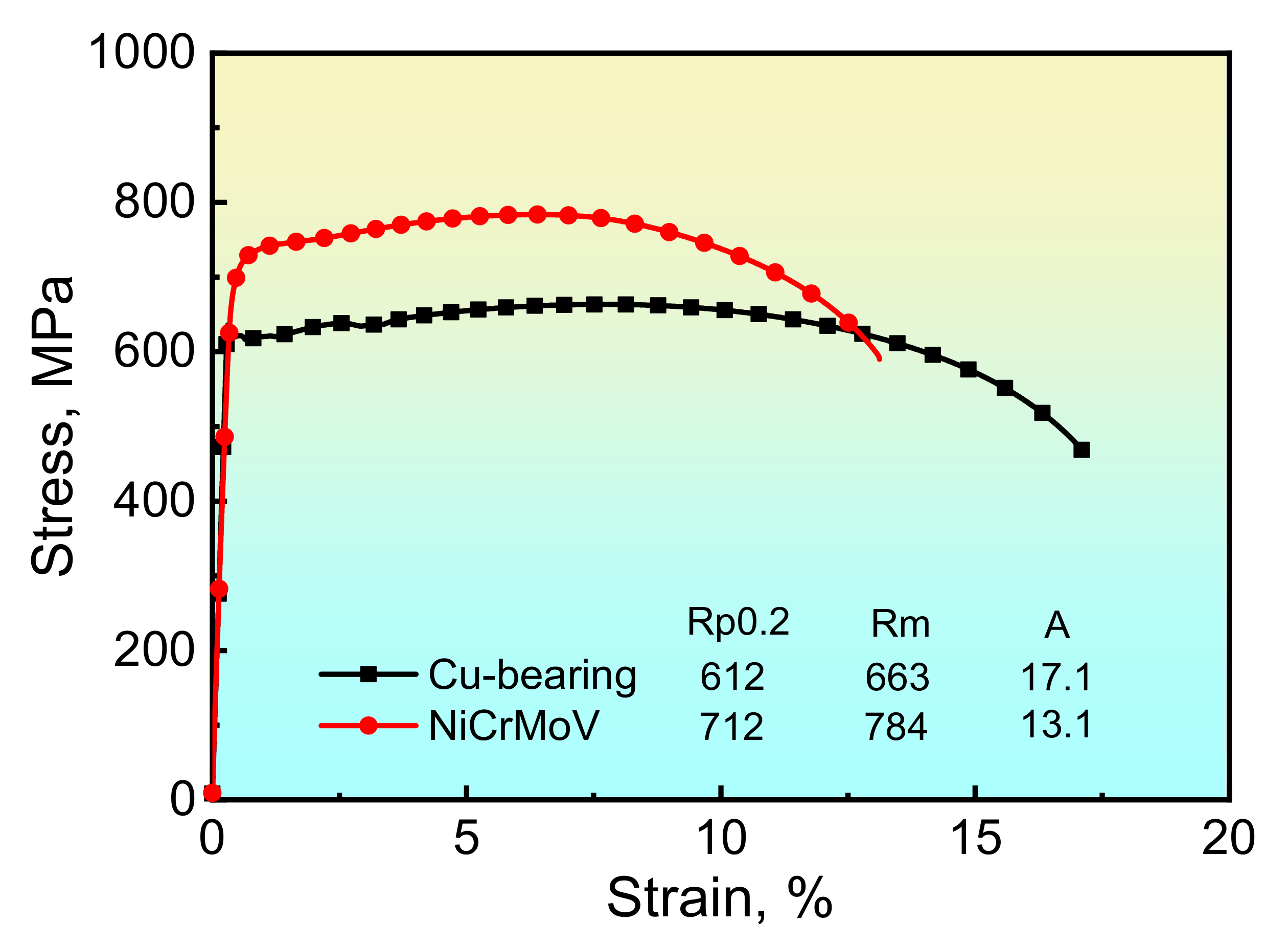
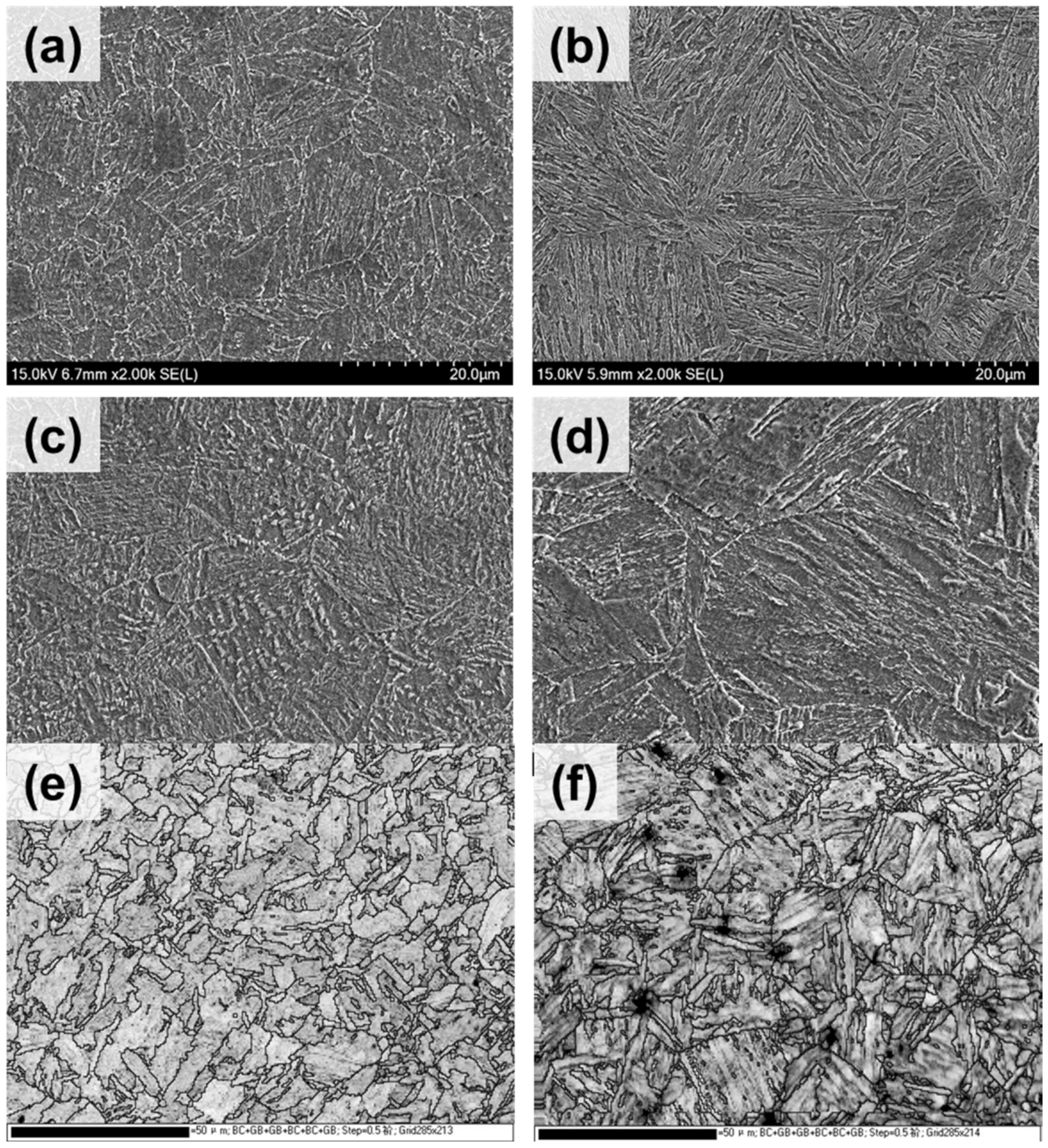
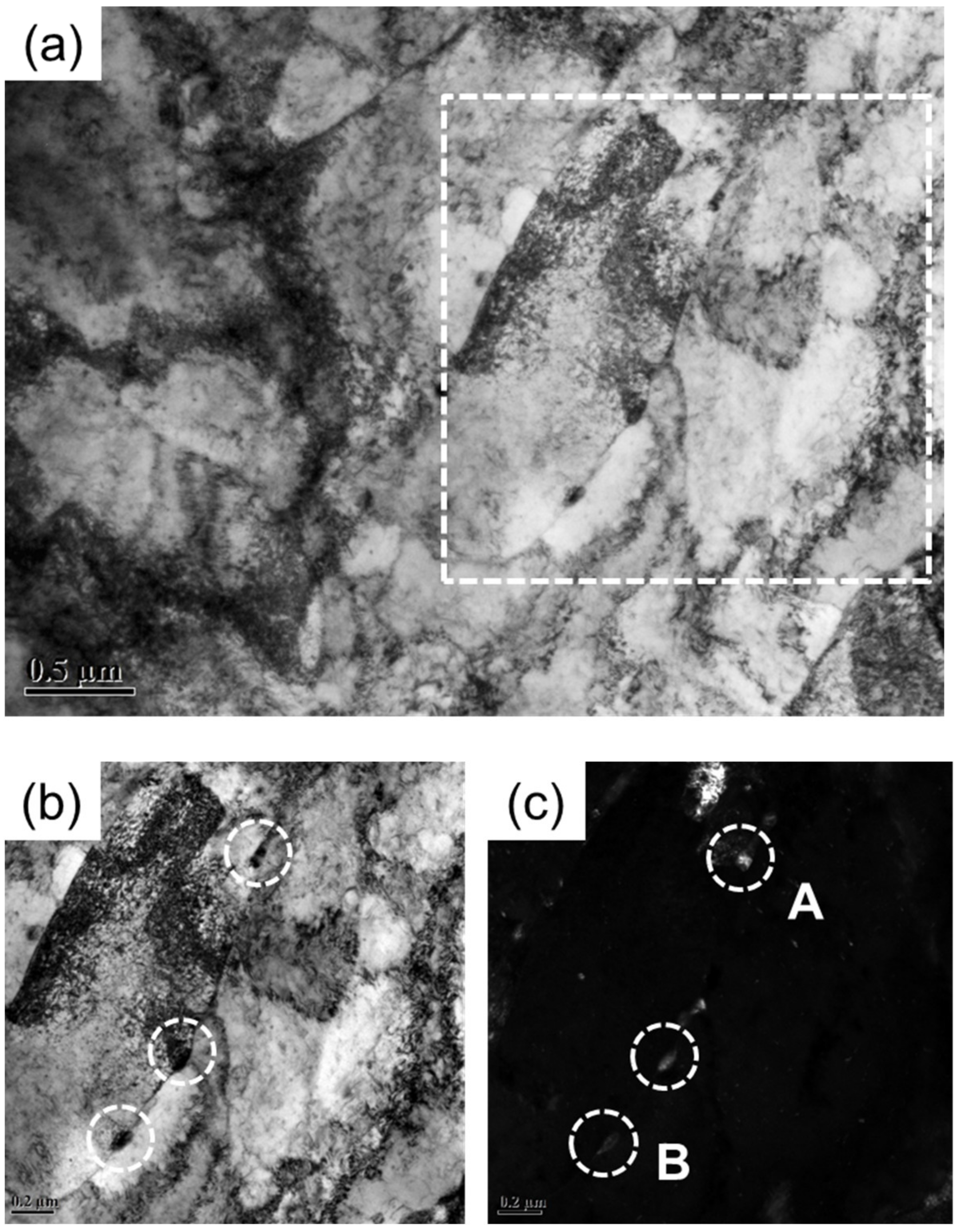
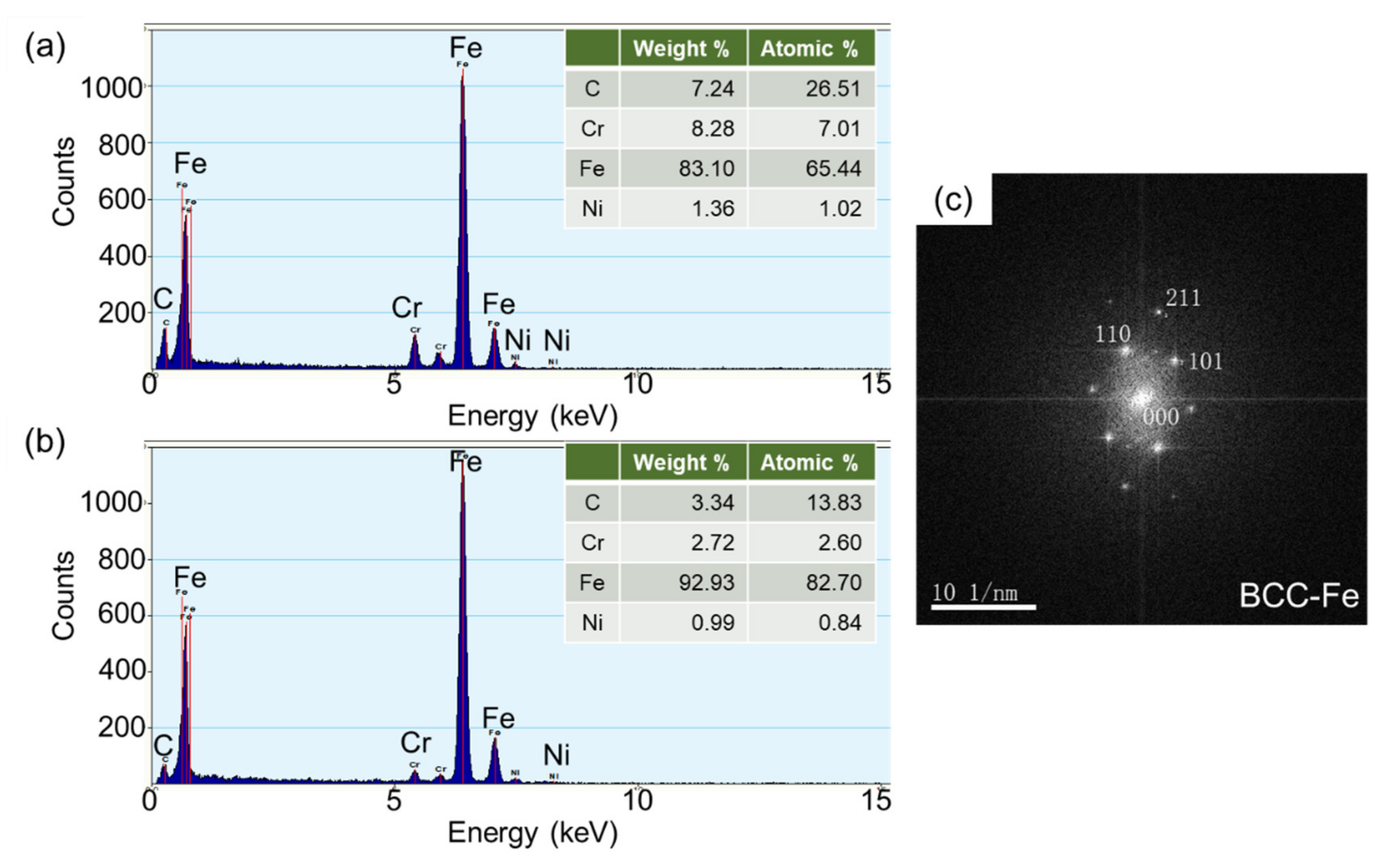

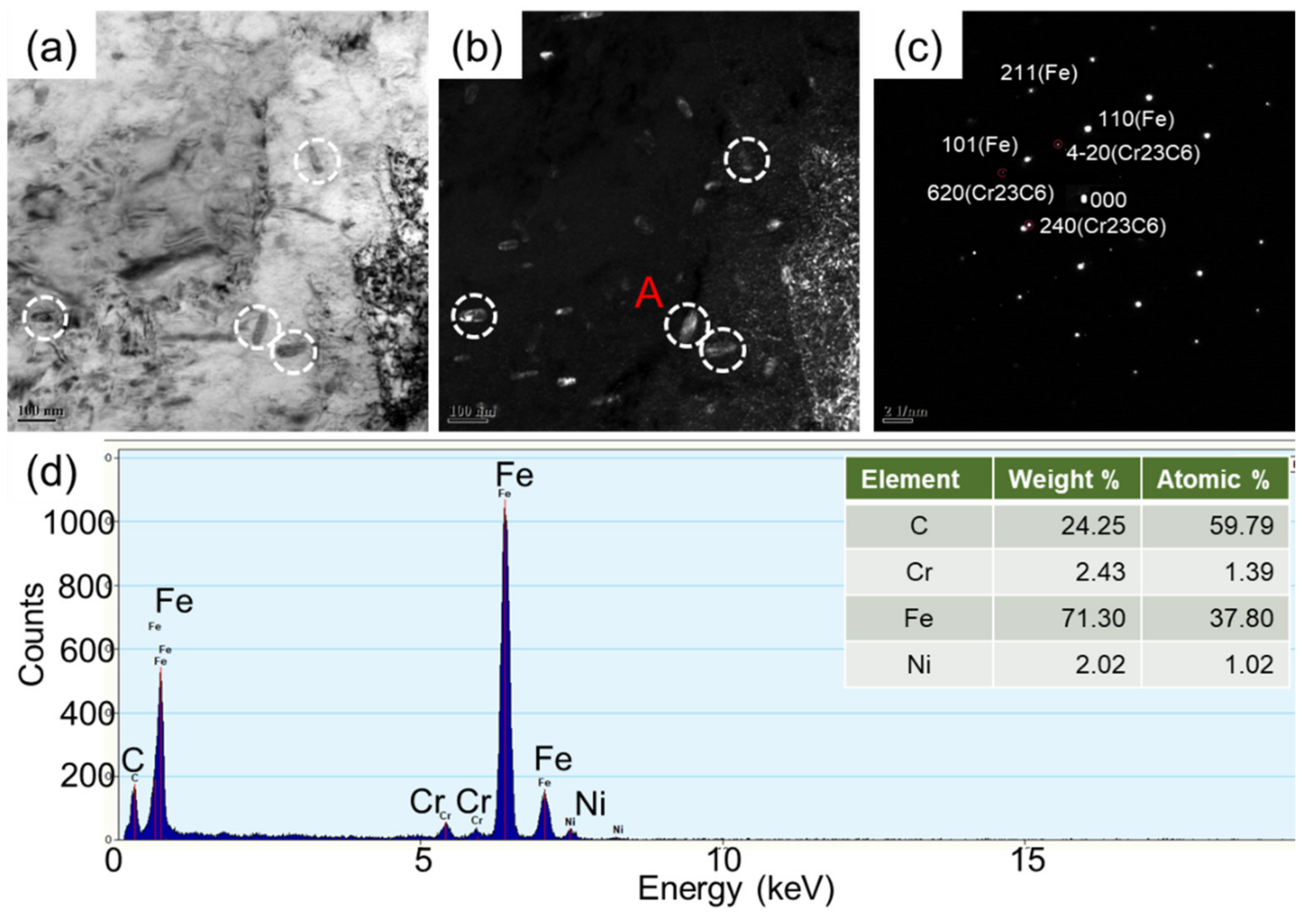
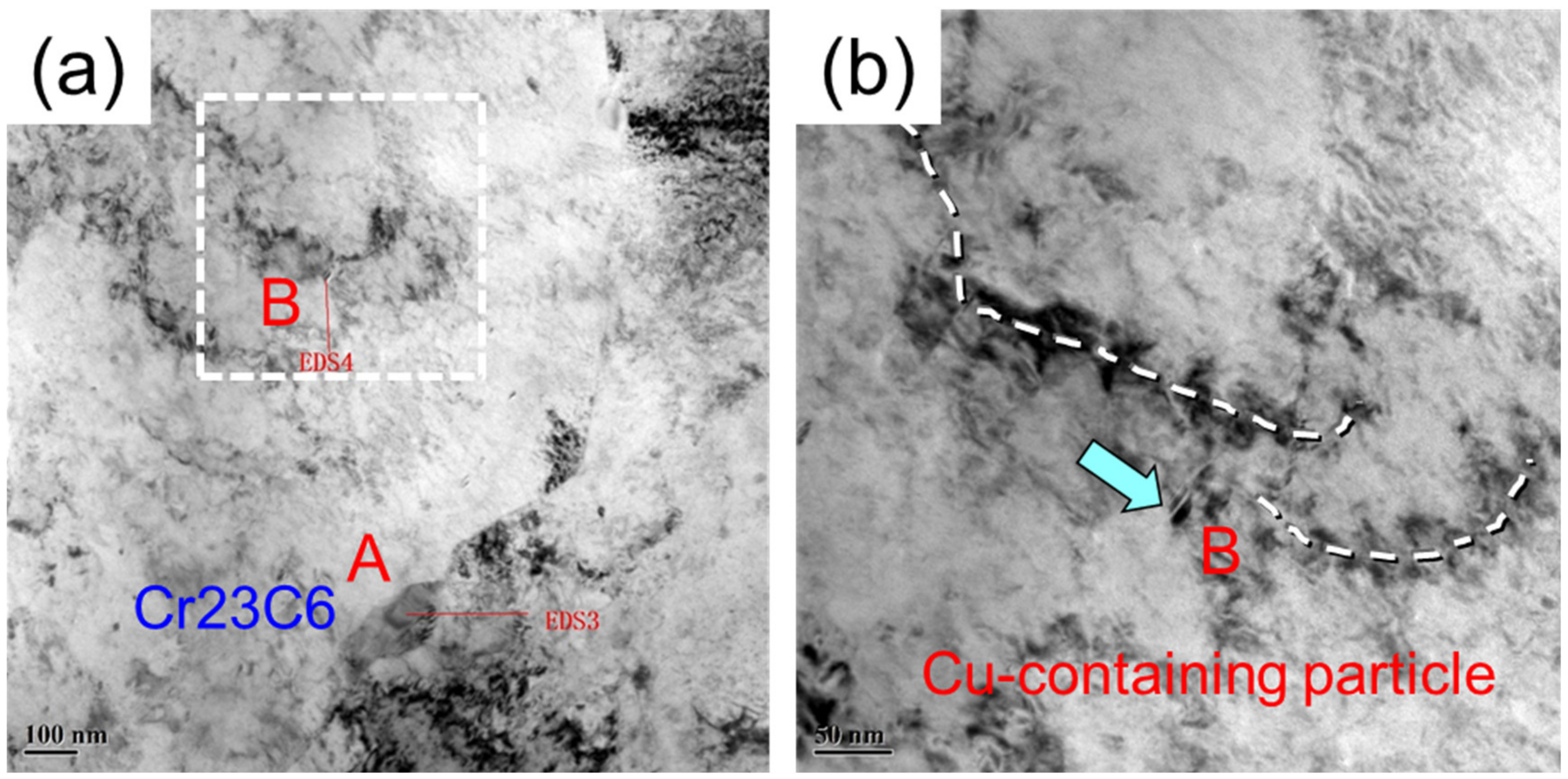
| Steel | C | Si | Mn | P | S | Ni | Cr | Mo | V | Cu | Nb | Ti | Als |
|---|---|---|---|---|---|---|---|---|---|---|---|---|---|
| Cu-bearing | 0.037 | 0.27 | 0.58 | 0.007 | 0.002 | 1.92 | 0.78 | 0.24 | - | 1.36 | 0.019 | 0.014 | 0.026 |
| NiCroMoV | 0.077 | 0.21 | 0.42 | 0.011 | 0.005 | 2.74 | 1.00 | 0.22 | 0.06 | - | - | 0.015 | 0.04 |
Publisher’s Note: MDPI stays neutral with regard to jurisdictional claims in published maps and institutional affiliations. |
© 2021 by the authors. Licensee MDPI, Basel, Switzerland. This article is an open access article distributed under the terms and conditions of the Creative Commons Attribution (CC BY) license (https://creativecommons.org/licenses/by/4.0/).
Share and Cite
Luo, X.; Xiang, C.; Chai, F.; Wang, Z.; Zhang, Z.; Ding, H. A Comparison Study on the Strengthening and Toughening Mechanism between Cu-Bearing Age-Hardening Steel and NiCrMoV Steel. Materials 2021, 14, 4276. https://doi.org/10.3390/ma14154276
Luo X, Xiang C, Chai F, Wang Z, Zhang Z, Ding H. A Comparison Study on the Strengthening and Toughening Mechanism between Cu-Bearing Age-Hardening Steel and NiCrMoV Steel. Materials. 2021; 14(15):4276. https://doi.org/10.3390/ma14154276
Chicago/Turabian StyleLuo, Xiaobing, Chongchen Xiang, Feng Chai, Zijian Wang, Zhengyan Zhang, and Hanlin Ding. 2021. "A Comparison Study on the Strengthening and Toughening Mechanism between Cu-Bearing Age-Hardening Steel and NiCrMoV Steel" Materials 14, no. 15: 4276. https://doi.org/10.3390/ma14154276
APA StyleLuo, X., Xiang, C., Chai, F., Wang, Z., Zhang, Z., & Ding, H. (2021). A Comparison Study on the Strengthening and Toughening Mechanism between Cu-Bearing Age-Hardening Steel and NiCrMoV Steel. Materials, 14(15), 4276. https://doi.org/10.3390/ma14154276






